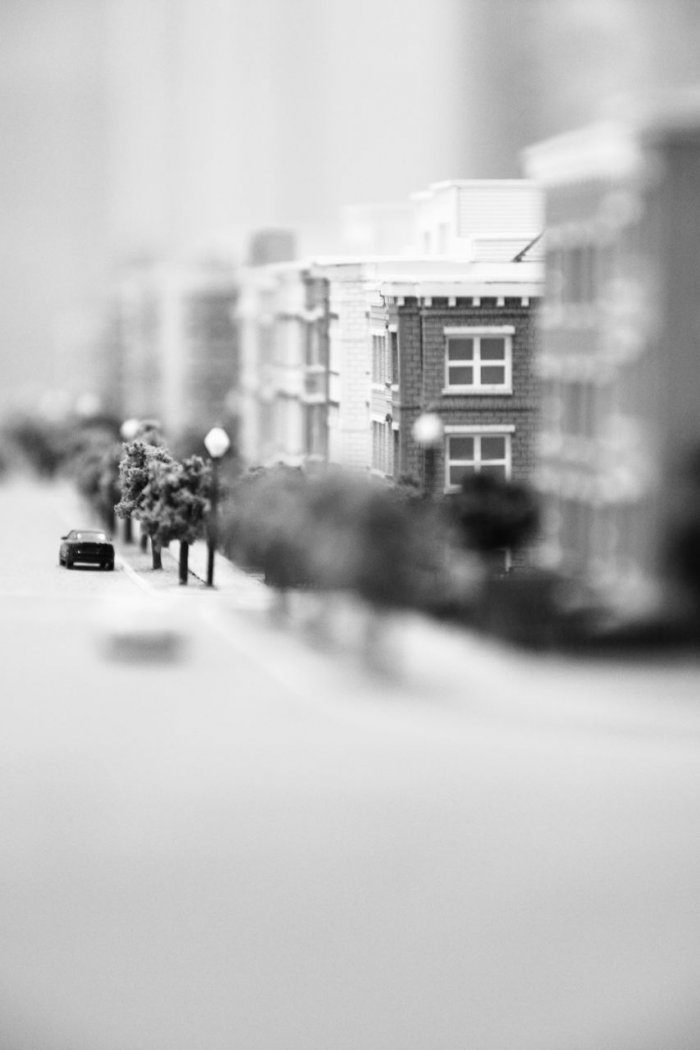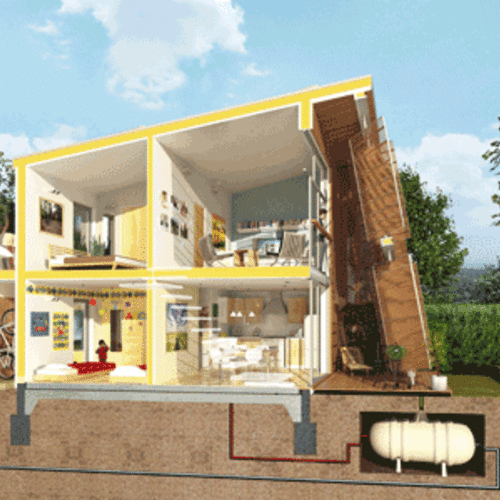
Image Credit: Rob Moody, Organic Think Inc
South of our nation’s capital, near the Navy Yard, the first phase of EYA’s Capitol Quarter project is well under way. It’s a residential rowhouse project that takes up nearly eight city blocks with mixed market rate, workforce, and subsidized rental housing. When completed, 90% of the project’s 300 units will be LEED for Homes certified. The remaining 10% will be subsidized housing units owned by the District of Columbia, which opted against LEED certification due to budget constraints.
I visited this area back in the early 1990s when I was in college. To put it lightly, it was not an area that a bunch of college students should be roaming around in search for fun. It was fairly crime ridden and rundown. Even though I have been to Washington several times since the 90s, I never have had a reason to return to the Navy Yard area until last month, when I visited the Capitol Quarter project. The area has really changed, with projects like Capitol Quarter attempting to breathe positive energy into the resurgent neighborhood, avoiding complete gentrification. In the 19th century, the Navy Yard was a busy nautical center, with a prominent residential community. River pollution, the construction of the elevated Beltway, and other factors turned it into arguably one of D.C.’s most neglected and crime-ridden areas. Capitol Quarter is one of a multitude of projects taking place in the next few years that will reshape the neighborhood, which is home to Major League Baseball’s Washington Nationals at Nationals Park, the first LEED-certified professional sports stadium in the country.
I hopped off the Navy Yard metro stop and walked a couple of blocks to Capitol Quarter. There I met Karen Benner, EYA’s new green construction superintendent. A year and a half ago, she was the product development manager, a position that was eliminated when the recession arrived. EYA felt that Karen’s interest in environmental issues and with her familiarity with new innovative products made her a perfect candidate for this new position overseeing green building strategy implementation on the Capitol Quarter project that had been many years in the making. I love stories about a green champion that retains a green job through this economic mess that we are in.
In her new position, one of Karen’s first responsibilities was to survey and evaluate the nation’s residential green-building rating systems and help determine which one would best fit the project. The NAHB Green Building Standard hadn’t rolled out in earnest, and the company was too late to sign up for the pilot phase. It was determined that LEED for Homes was the best option, and the marketing potential of the USGBC rating system would be a benefit. (An aside: EYA is building a similar project in Virginia using the EarthCraft rating system.)
After diving in to the LEED for Homes checklist and requirements, Karen compared them to EYA’s existing construction methodologies to determine which, if any, strategies would need to be modified, added or deleted in order to achieve certification. Years before, the company had tried to improve the envelopes of its homes for better energy efficiency, comfort, and indoor air quality. EYA incorporated panelization, which affected waste management and optimal framing. Location and Linkages were credits within LEED for Homes that were inherently achievable in Capitol Quarter, due to the infill location, typical of EYA’s projects.
Karen did make the determination that a few strategies needed to be employed in the project, resulting in an additional cost of less that $1,000 per unit for LEED certification:
- Continuous rated bath fans were installed in powder rooms, allowing for fresh air introduction through a dampered passive inlet.
- Microwave/hoods were vented to the outside of each unit, removing humidity from inside the building envelope and reducing the possibility of mold growth.
- More CFLs were used in recessed lighting.
- Low-e windows were included.
- Aerators on lavatories, showers, and kitchen sinks were replaced.
I’ll continue the discussion about Capitol Quarter next time and share some certification results, affordable unit info, sampling certification methods, and sales data.
Check out my pictures of this project on Flickr.
Weekly Newsletter
Get building science and energy efficiency advice, plus special offers, in your inbox.









2 Comments
What's an EYA?
SO?
EYA
is a development company in Washington DC.
Log in or create an account to post a comment.
Sign up Log in